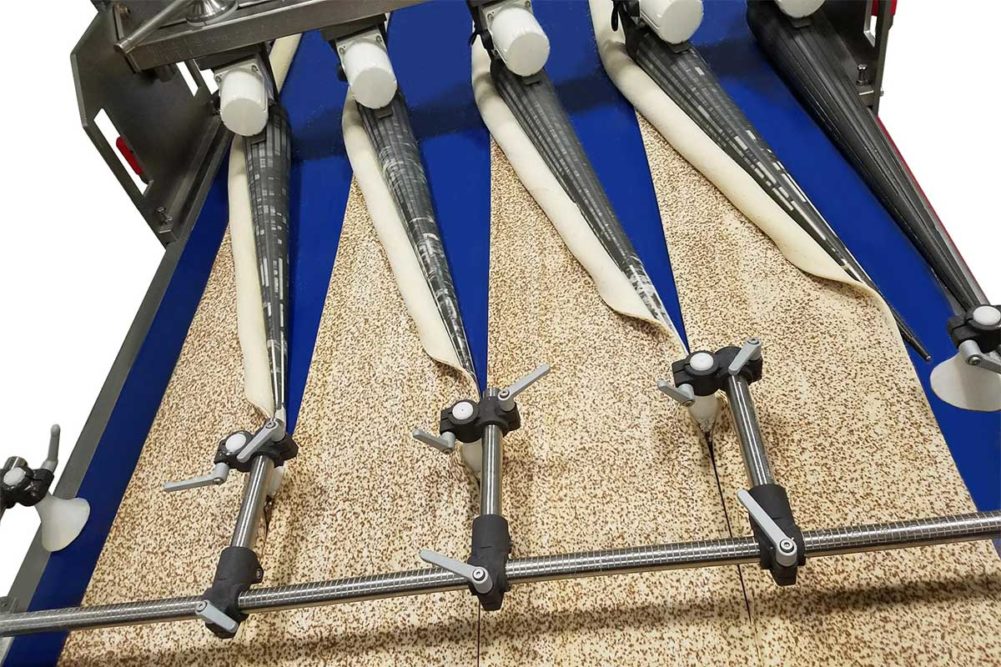When it comes to cleaning, bakeries prefer to keep the process as dry as possible. Yes, flour and water do mix, and that’s the problem.
However, in operations where baked goods are topped or filled with meats and other proteins, the US Department of Agriculture (USDA) requires these facilities to take their cleaning process to a different level.
“These plants require daily hose down with chemicals to meet their USDA requirements, and the equipment has to be built to last mechanically while the electronics have to be designed to withstand the rigorous cleaning process,” said Nick Magistrelli, vice president of sales, Rademaker USA.
Food manufacturers that produce handheld and other protein-filled baked goods have several options. Hans Besems, executive product manager, AMF Tromp, an AMF Bakery Systems brand, recommended dividing the operation between raw and cooked products.
“Production lines must be designed with separate ingress and egress to prevent contamination and ensure an orderly flow of materials through each step in the production process,” he explained. “Equipment must be designed with fully washdown, smooth, accessible surfaces, and attention to tooling and component sanitation is also required. Gluten-free facilities require completely separate production environments from any gluten-based products to prevent cross contamination.”
Mr. Besems added that AMF eliminates open, hollow holes or traps for water or contaminants. It also designs production lines with simple flow-through processes, transporting materials with the shortest distance between each phase, using gravity where possible, to prevent contamination.
Because USDA requires wet cleaning, often using chemicals, sheeting and laminating lines are typically made with 316 stainless steel and food grade painting.
“It doesn’t mean the design is changing, but the materials are more durable and can withstand a tougher sanitary environment,” said David Moline, vice president of sales and marketing, Moline Machinery.
Sheeting equipment also requires high IP 67, 69 or 69K electrical components that can withstand washdown and high-pressure water, noted Alex Weissbach, head of technology and product management, Rondo. Hygienically designed lines come with sloped sides that will not harbor debris or bacteria. He added that water is designed to flow off the line, not pool up, which allows for easy cleaning and quicker changeovers.
Dino Cantore, senior master baker and technologist at Minipan, said the company employs clean-in-place systems as well as easily removable extruding heads and other parts that can be power washed in a separate department. Minipan also joined the European Hygienic Engineering & Design Group (EHEDG), where food machinery companies share best practices on sanitary design.
This article is an excerpt from the July 2021 issue of Baking & Snack. To read the entire feature on Sheeting & Laminating, click here.





